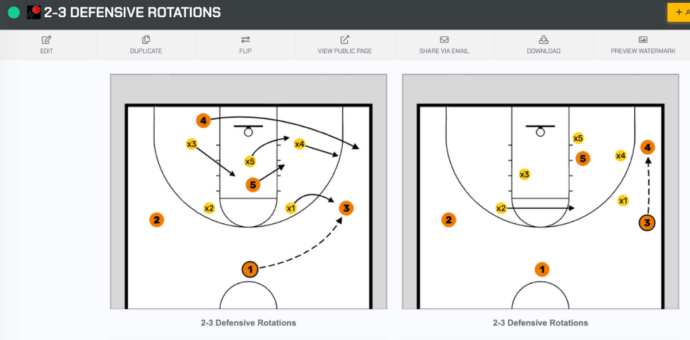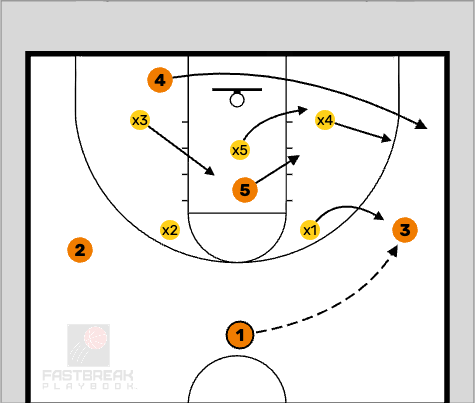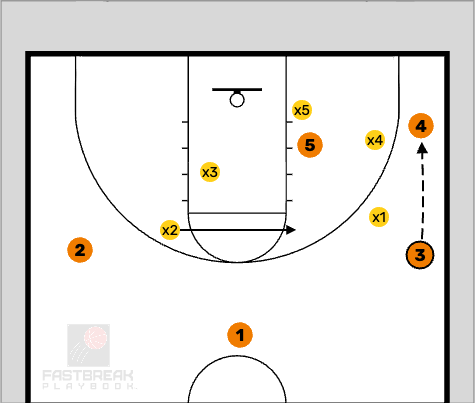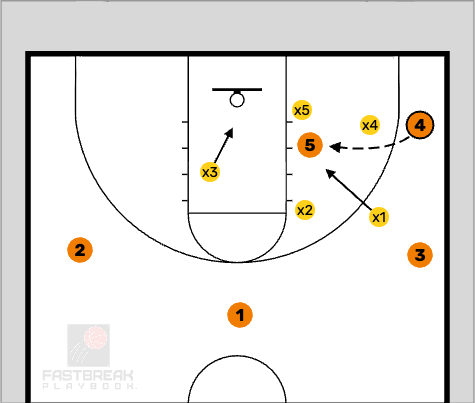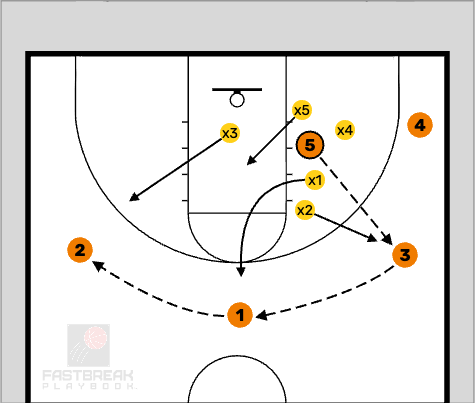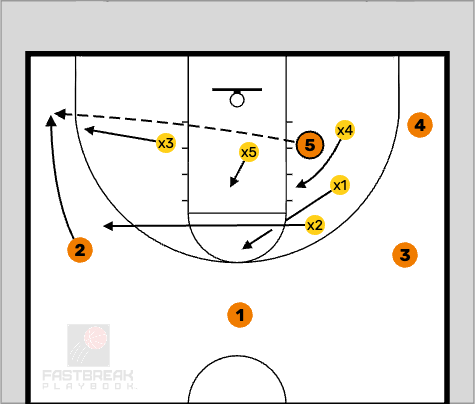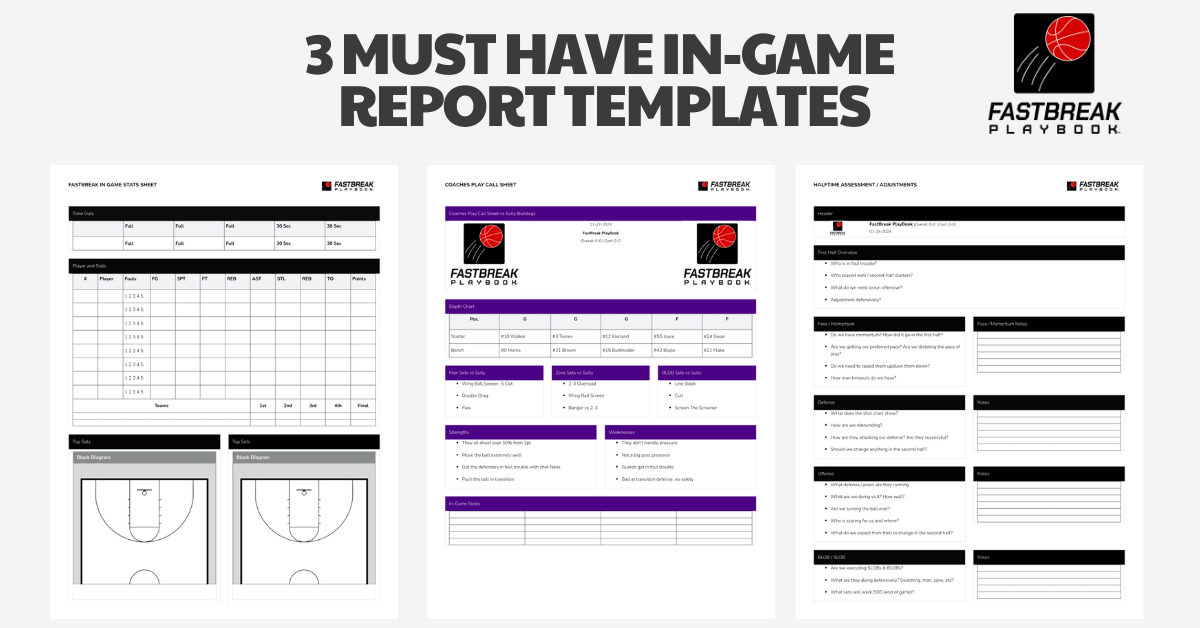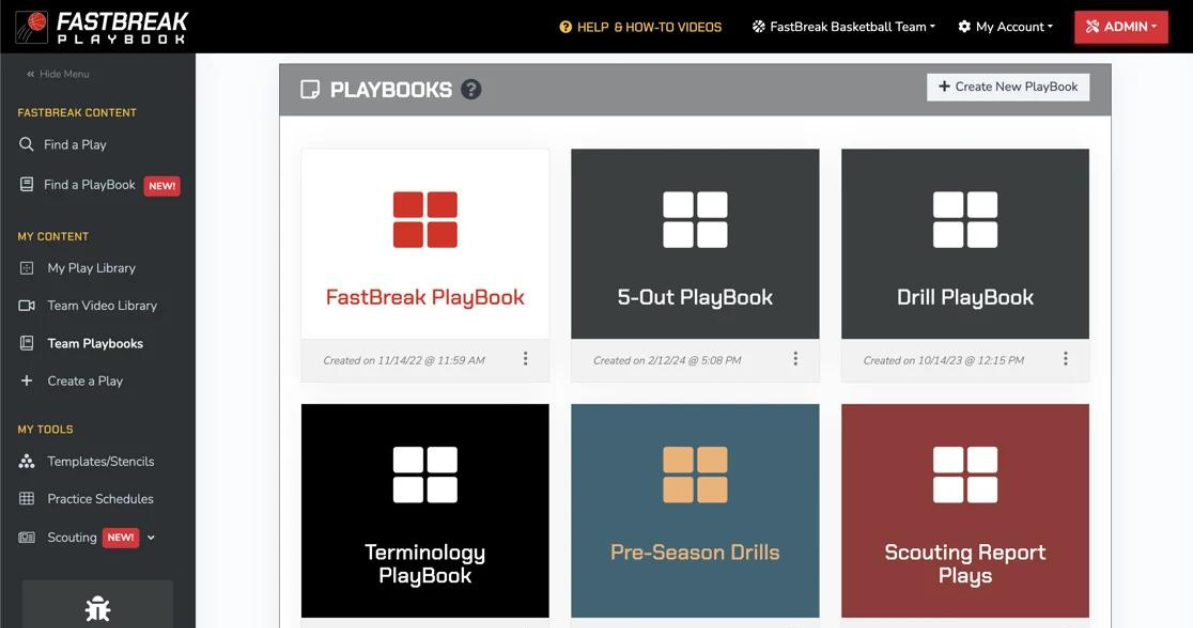The 2-3 zone defense limits dribble penetration, contests perimeter shots, and reduces close-range scoring opportunities. This zone defense remains a viable strategy in basketball, offering both advantages and challenges depending on the opponent’s strengths and offensive tactics. By understanding its principles and effective execution, teams can enhance their defensive capabilities and adapt to various game situations.
What is the 2-3 Zone?
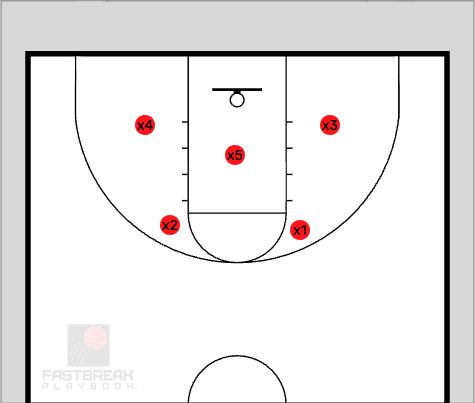
The 2-3 zone defense positions two defenders at the front and three along the back of the zone. This setup aims to cover key areas effectively, with X1 and X2 defending the high post and wings, X3 and X4 guarding low post and corner positions, and X5 positioned near the basket for interior defense.
Advantages of the 2-3 Zone Defense
One of the main advantages of the 2-3 zone defense is its effectiveness against teams with weaker outside shooting skills and those reliant on low post-scoring. By double-teaming the low post, the defense can force turnovers or disrupt scoring opportunities.
Moreover, the zone’s versatility allows defenders to adjust to ball movement quickly, ensuring coverage across the court’s perimeter and interior areas.
Disadvantages of the 2-3 Zone Defense
Despite its strengths, the 2-3 zone defense has vulnerabilities, particularly in defending the high post. As well as defending teams proficient in perimeter ball movement. Effective offensive strategies can exploit gaps in the zone, leading to open shots or high-percentage scoring chances.
Key Principles
- Limiting Low Post Touches: Defenders must prevent easy entries to post players, using positioning to deny scoring opportunities at the basket.
- Contesting Jump Shots: Influencing perimeter shots is a goal, defenders must contest all shots and force opponents into difficult shooting situations.
- Boxing Out for Rebounds: Zone defenses rely on team rebounding rather than man-to-man assignments. Proper boxing out after shots is crucial to prevent second-chance scoring opportunities for the offense.
- Bumping during Ball Reversal: To counteract ball movement from one wing to another, defenders can use the bumping technique. This involves temporarily adjusting positions to cover open areas and disrupt the offensive flow.
Defensive Rotations in the 2-3 Zone
The play diagrams examples show how the 2-3 zone adapts to different offensive scenarios:
- Example 1: x1 and x2 cover the high post areas and deny potential entry passes into the high post. On the wing, defenders x1 or x2 shift to prevent open shots while maintaining interior coverage.
- Example 2: At the same time, x4 and x3 will cover the low post areas while X5 stands in front of the basket.
- Example 3: This illustrates the 2-3 zone defense when the ball is in the corner. X4 closes out to prevent an open jump shot or dribble penetration. Meanwhile, x1 covers the wing, and x2 guards the high post. x3 remains responsible for the weak side low post, while x5 continues to guard the low post player.
This part of the example demonstrates potential passing options that could occur out of the low post-double team and how the zone defenders should rotate accordingly. When the ball gets into the low post, x5 plays behind and takes away the baseline near the low side.
- Example 4: If 3 receives the ball from 5, then x2 should close out and contest the jump shot if necessary. x1 will take x2 previous matchup and x3 will be responsible for the weak side offensive player.
- Example 5: Similarly, if 2 receives the ball from either 5 or a pass from 1, then x3 should step up to cover the left side wing area and after that, x2 should closeout towards the left side wing (gray solid arrow) and then bump x3 back to the left side low post area.
- Example 6: Additionally, if 3 flattened out to the left side corner and receives the skip pass from either 5, 2, or 1 , then x3 should closeout and contest if necessary.





